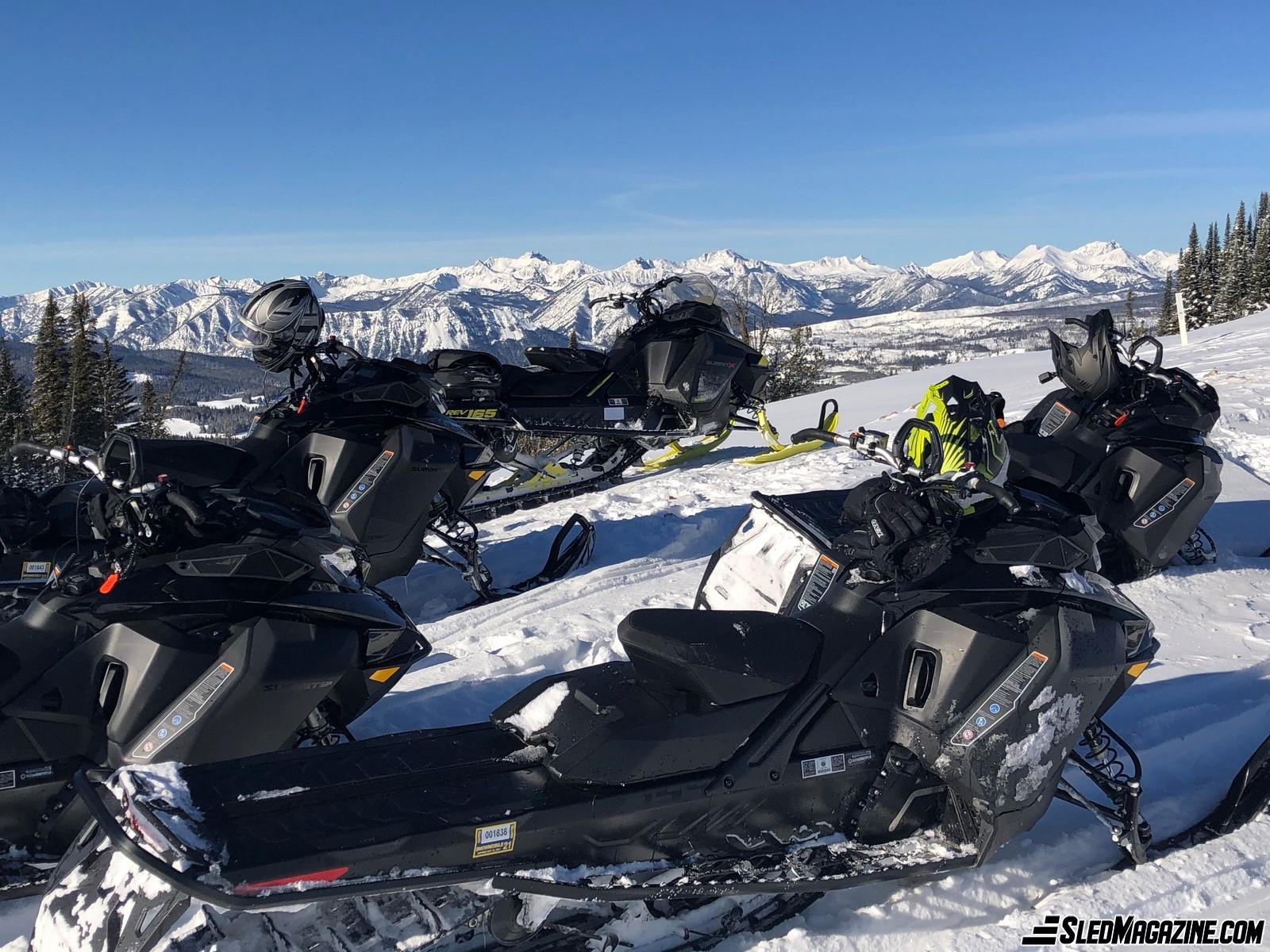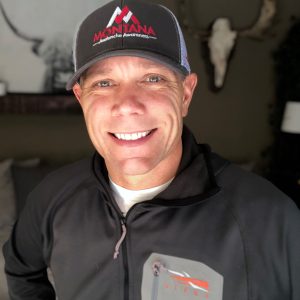Table of contents
Toggle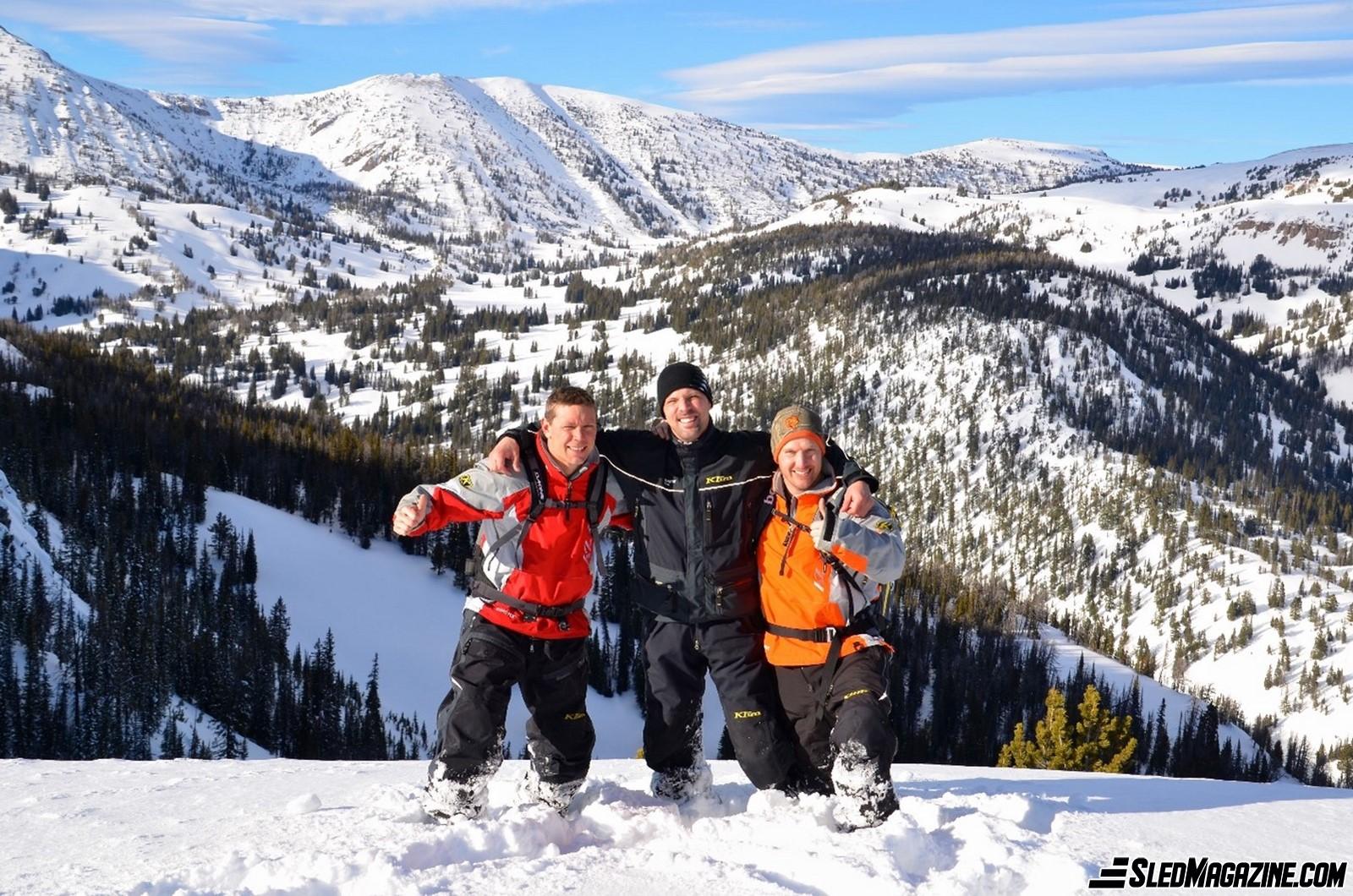
For most people, riding sleds is all about having fun with family and friends, exploring areas and being creative with the terrain and your backcountry lines. Whether you’re feeling the G-forces of holding a tight corner on a smooth, freshly groomed route with your trail Ferrari or have cold smoke powder coming over your hood as you crank turns in the backcountry on your tricked-out mountain sled. These are the days we all dream about, and it’s what keeps us going all year long.
With the focus on fun, we also can’t forget to plan for the “what ifs” while we’re out riding. What if the sled breaks down when you’re riding down in a hole in the backcountry? Do you have tools with you or a tow strap to pull it out … can you tow it out, or is the terrain too steep? Will you have to spend the night in the mountains? What if someone in your group misses a corner on a trail ride and crashes? Do you have an extra jacket or a way to start a fire to keep them and yourself warm?
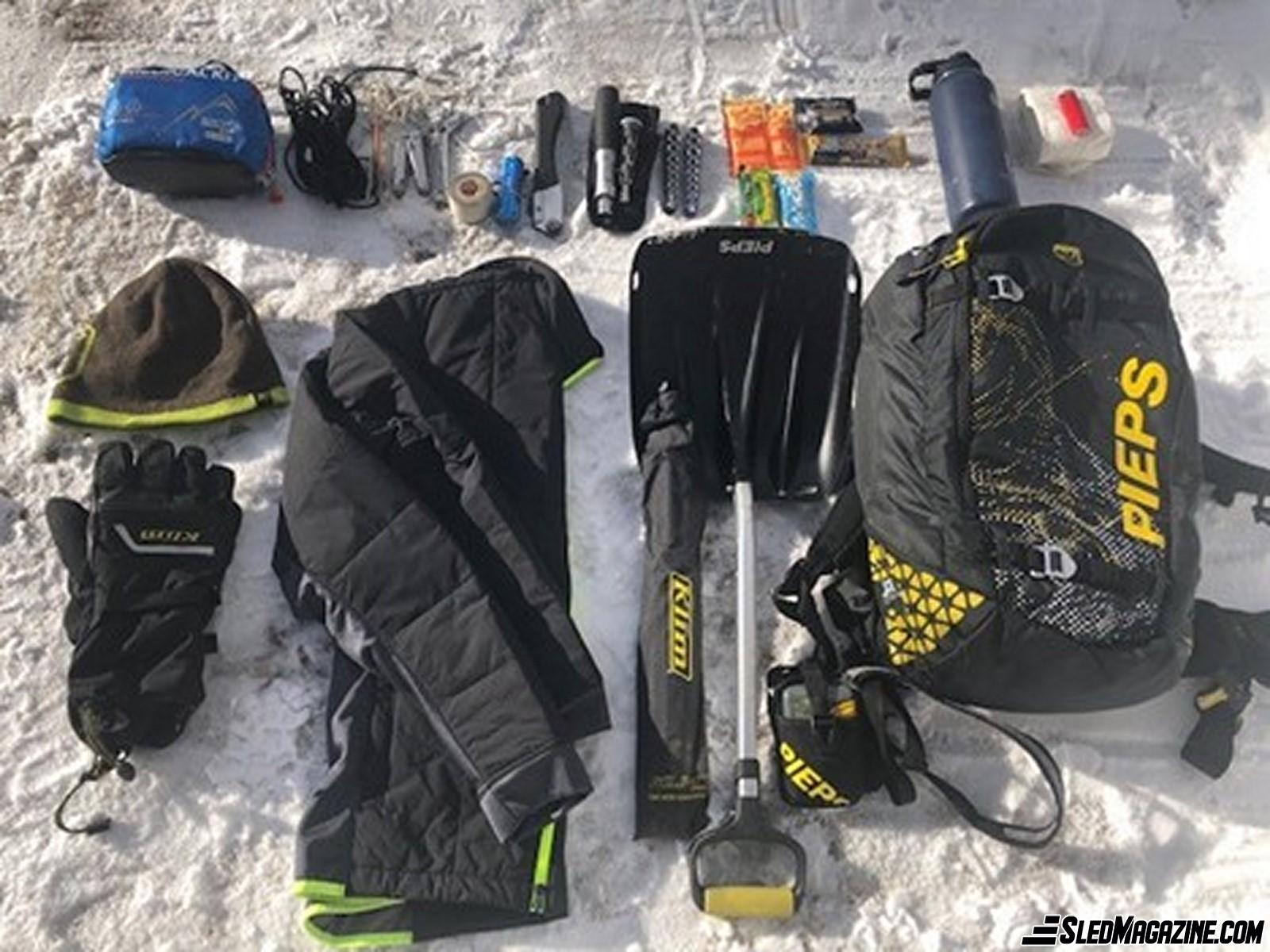
Often snowmobile trails and backcountry ride areas are far away from town and available help. It can take hours before Search and Rescue, or medical professionals can get to you. If you’re way out in no man’s land (some of us call it paradise), you may have to spend the night. A question to ask yourself is: Are you prepared to do that? Having a few extra items with you can keep you from making a separate trip back to retrieve a broken-down sled, or it could be a matter of life and death if you must spend the night in the mountains.
As a backcountry snowmobile guide, a member of Search and Rescue for West Yellowstone, Montana and an avid rider, I’m always playing the “what if” game. I admit, there are more things a person could carry to have an even higher level of preparedness, but I’ll show you the tools I bring any time I head out riding. When riding in the mountains, it’s important to have everything you need in case something happens but still be relatively light, so the extra weight doesn’t hinder your playing when you’re off trail in the steep and deep.
Here’s a breakdown of items I always bring with me when I’m heading out for a ride:
Safety Gear
- Avalanche Beacon, Probe and Shovel – The three must-haves if you’re riding in mountain terrain. I typically ride in the mountains, but even if I’m planning to stick to the trails for the day, I always have my beacon turned on and under my gear when I leave the house. I have a probe and shovel in my pack. If you would like more information on avalanches or using avalanche safety gear, you can find it at Avalanche.org for the states and Avalanche.ca for Canada.
- Avalanche Pack – When riding in the mountains in avalanche terrain, I like to have an extra level of avalanche protection. When inflated, an avalanche pack can help keep you on or closer to the surface if you get caught in an avalanche.
- Medical Kit – Accidents happen quickly so having a medical kit handy is important when riding in remote areas, as medical services can be hours away.
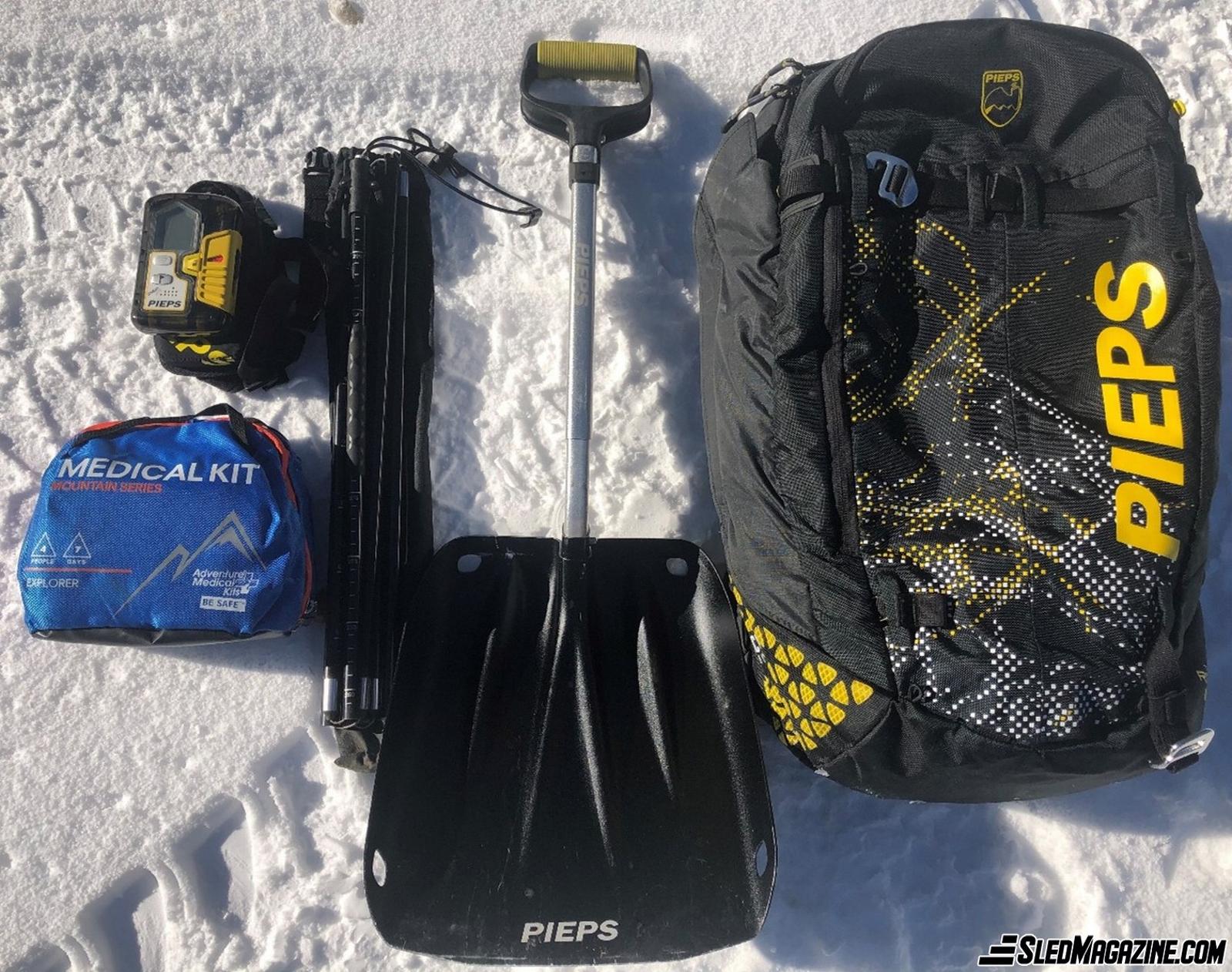
Extra Clothing
- Jacket – Having an extra layer of insulation can make all the difference in case you need to stay the night or if someone is injured and must lie in the snow for hours. You can put it between them and the snow to help keep them warm.
- Hat – Whether you’re eating lunch out in the field or need to stay the night because of an emergency, having a warm hat to keep you comfortable is a must-have.
- Spare set of warm gloves – As you ride, your gloves get wet from the snow outside as well as from sweating on the inside. Having a dry backup set of gloves is nice to keep your hands warm; it’s also really great if your gloves are icing up, to switch them out with a dry pair to keep a solid grip on your sled.
- Neck warmer – I don’t always wear a neck warmer, but for long trail rides or really cold days, it’s nice to have another layer to cover your neck and help protect it from the cold.
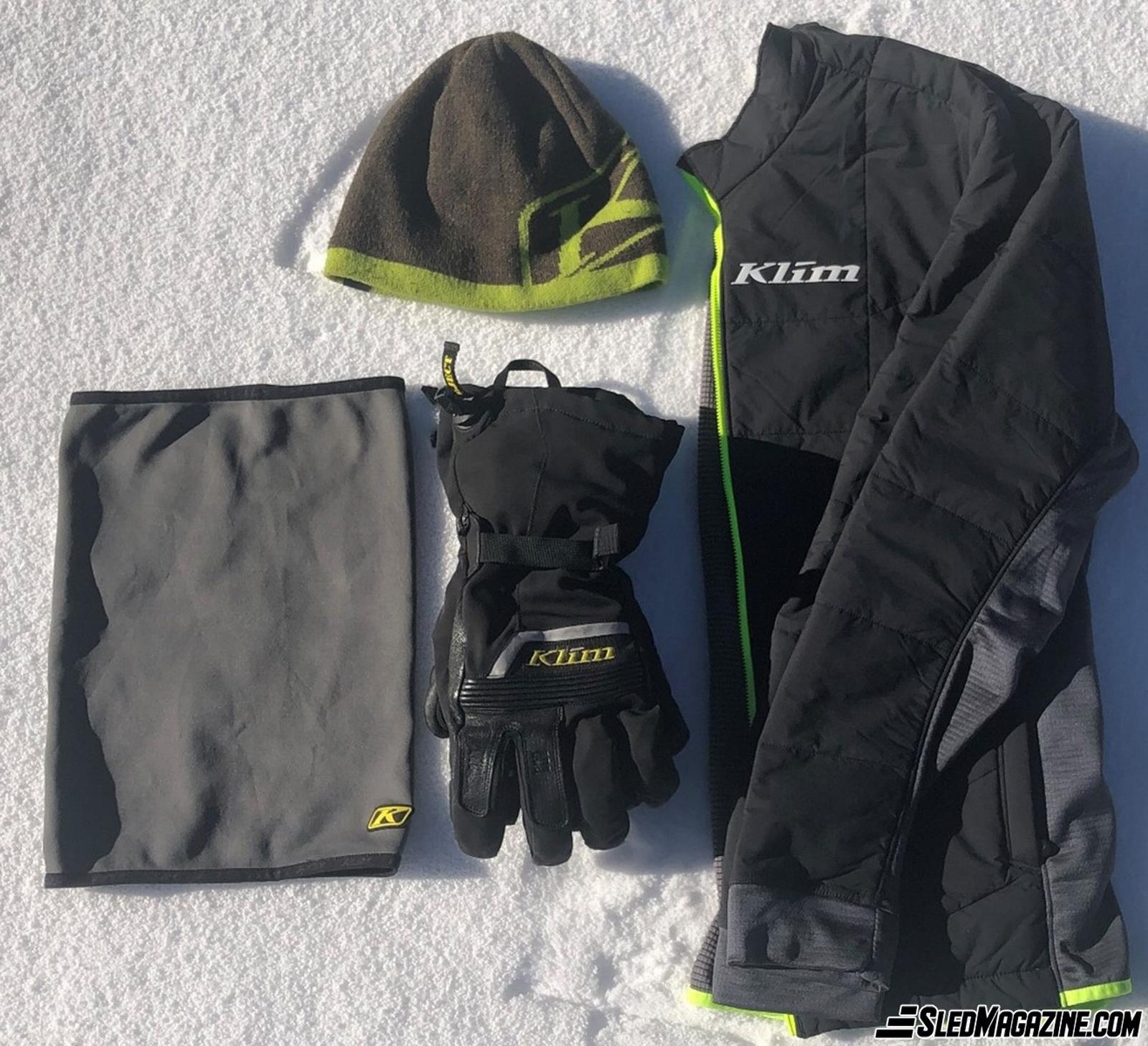
Tools
- Rope – Rope is one of the most useful and used tools you can have when you’re out riding. I have personally used it countless times for towing out sleds that have broken down or sleds that have hit a tree or rock (sometimes it’s hard to avoid the hidden land mines). I like to use parachute cord and have 40 feet or about 12 meters with it to double it up when towing a sled out. Parachute cord also works well, because of its size and strength, for building a splint if someone in the group breaks an arm or leg.
- Zip ties – I bring 6 various sizes and lengths of zip ties. They are small, and light and they have saved me from having to tow a dead sled out of a hole many times.
- Multitool – Everyone knows how handy a multitool is. Having one of these little guys packed, with all the separate tools and blades it has, can be extremely useful.
- Adjustable Wrench – An adjustable wrench is good to have for some of the larger bolts on your sled that a standard small tool kit won’t be big enough for, such as your clutch bolt.
- Wire – Wire can be used when you need to fix an area of your sled that gets hot like the engine or exhaust. I once used a piece of wire to fix a broken throttle cable, so I could ride a sled 18 miles out of the backcountry.
- Roll of tape – A roll of tape is handy for many things. You can use it to help mend a leaking or cut hose. It won’t be a permanent fix, but if it can get you back to town or your truck, that is what you’re shooting for.
- Flashlight – A flashlight is a great signaling device if you’re stranded after dark and trying to help the search and rescue group find your location. If you’re stuck and going to be there a while, a flashlight is helpful when gathering wood for a fire after dark. Flashlights are also handy for working on a sled, to see into the dark corners of the engine compartment.
- Small hand saw – Having a saw to clear small trees from in front of your sled when it’s stuck on a steep downhill is a lifesaver. The other option is trying to pull your sled uphill against gravity. Sometimes it’s easier to clear a small tree or two and take the sled out downhill. It’s also your main firewood gathering tool in case you are going to build a fire and be there a while.
- Small tool kit – I bring a Nebo Ultra Tool kit with me. It’s small, compact and has most of the sockets and bits to fit any sled. It comes in a compact pouch to keep everything organized and together, so you’re not losing pieces as you ride.
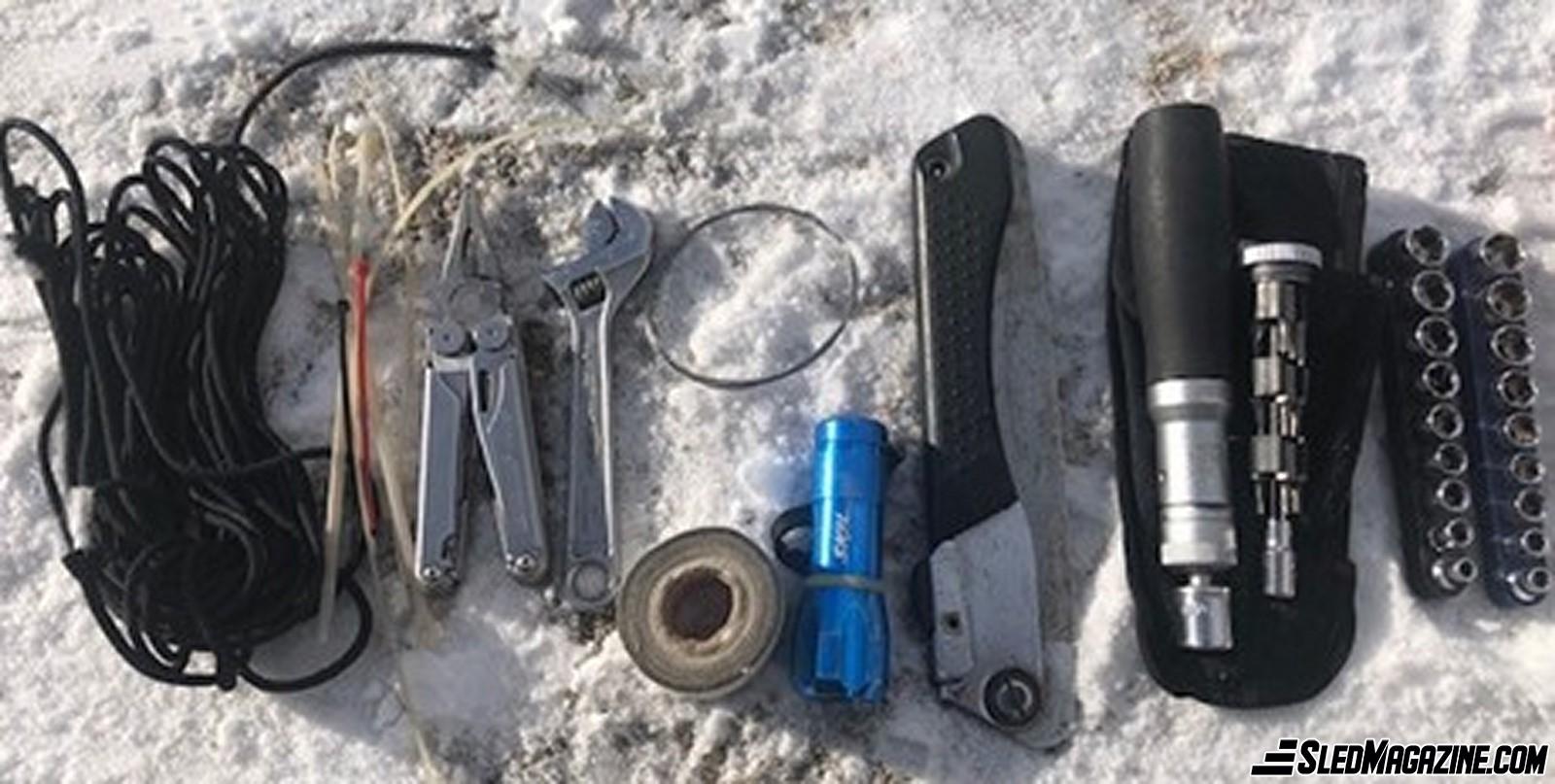
Survival Gear
- Food – Food is kind of a no-brainer when it comes to an item you should bring when you go out riding. However, most people only bring enough food for what they plan to eat for lunch for that day. I bring a sandwich or wrap for lunch, and then I always have a handful of extra snacks in case someone in the group forgot their lunch or you’re stuck in the woods for the night. Having food when it’s cold out is important to help keep your body temperature up.
- Water – Everyone is smart enough to bring water, but what I see is people bring very little water, and it generally is cold water in their pack or tunnel bag. If it’s cold out, your water will freeze, and then you’re essentially out of water. I like to use a double-layered insulated water bottle and fill it with warm water just before I leave for the day. That way, you’ll have warm water that’s easier for your body to absorb, and you’re likely to drink more water if it’s not freezing cold or frozen. When riding in the mountains, you exert a lot of energy, and your body needs a lot of water, especially if you’re not from a high elevation area. Staying hydrated is important to help prevent altitude sickness so you can feel your best and can ride at your peak performance level.
- Toilet paper – Toilet paper or what my friends and I call it … mountain money. It’s worth a lot of dough when you’re in the mountains and have to do your business. We’ve all been in the situation where you forgot the TP, and there’s no way it’s waiting until the end of the day when you get back. So, what do you do? You sacrifice your shirt or pair of socks … we’ve all done it… well, some of us have done it. So, take it from me, if you don’t want to explain to your buddies why you’re riding without socks or wearing a belly shirt, you’re going to want to throw a roll of TP in. TP is also extremely helpful when it comes to starting a fire in the elements.
- Lighter – Having a way to start a warming or signaling fire is super important when you head out riding. Even if you’re just trail riding for the day, having a lighter along and being able to build a warming fire next to an injured rider while you wait for help can be the difference between life or death.
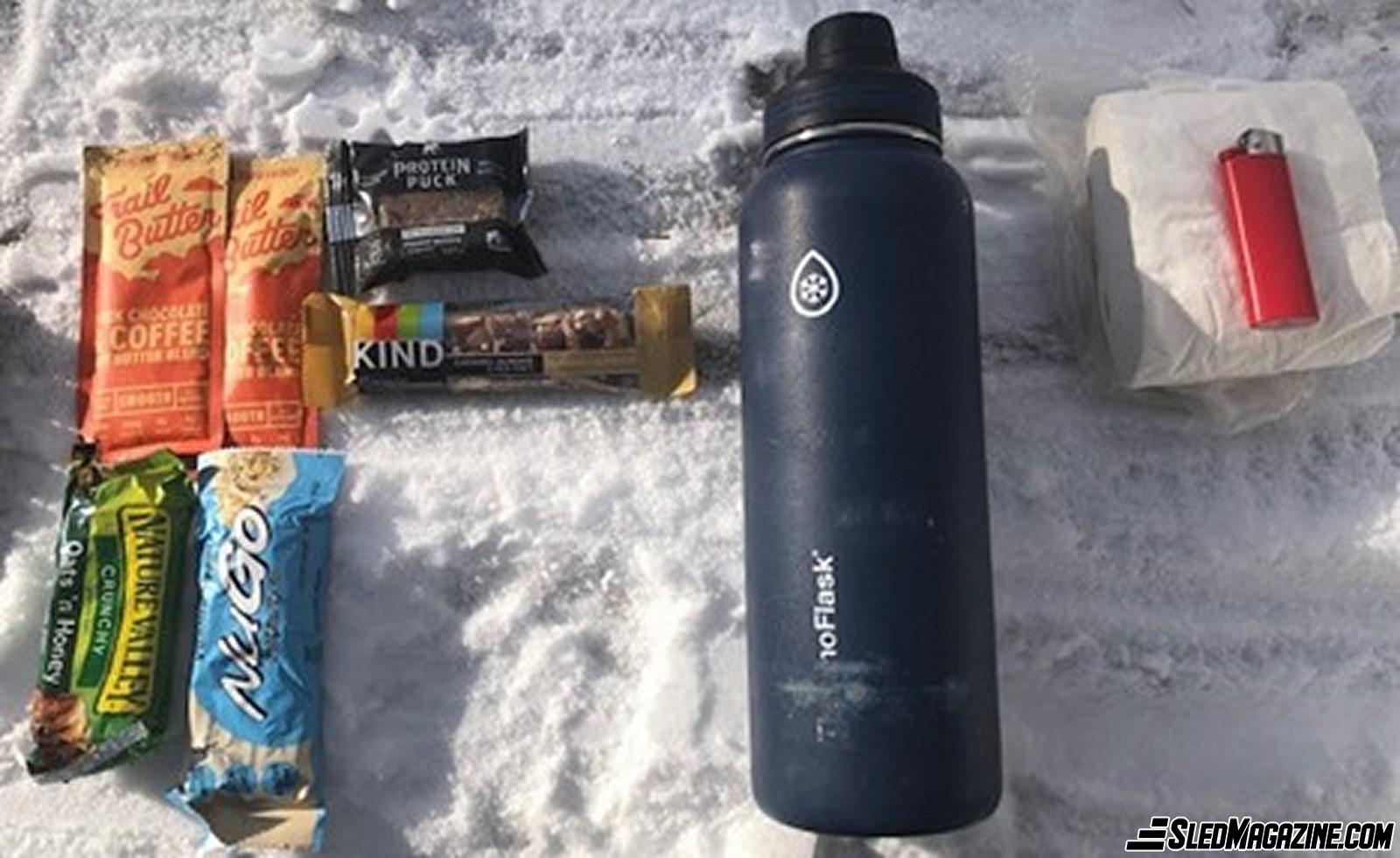
Keeping everything in the tunnel bag just behind the seat, except the safety gear that’s in your pack, takes most of the extra weight off you as the rider. This will save energy and make you as light and maneuverable as possible.
Riding sleds should always be focused on maxing out the fun meter no matter where your sledding adventures take you. Being prepared and having a few extra things with you, you can make all the difference in the world when one of those unforeseen breakdowns or accidents happen. Take a few extra minutes before your next trip and get the survival items on your sled dialed in. Then you can focus on your upcoming sledding adventures with confidence and peace of mind.
